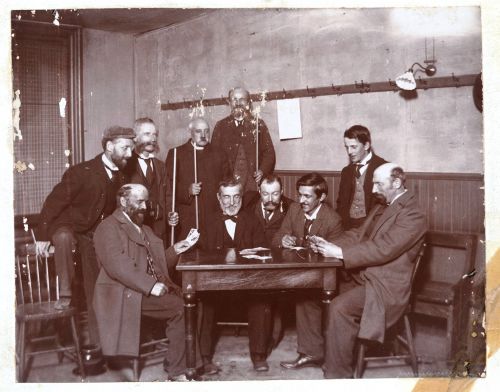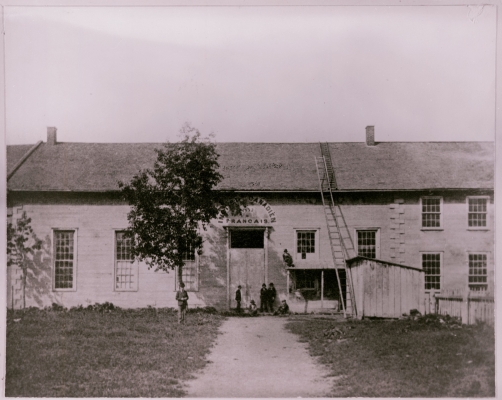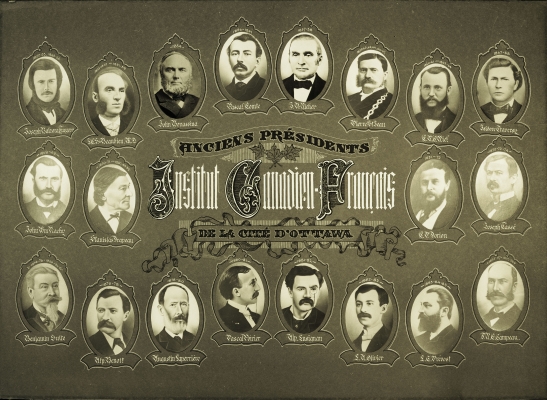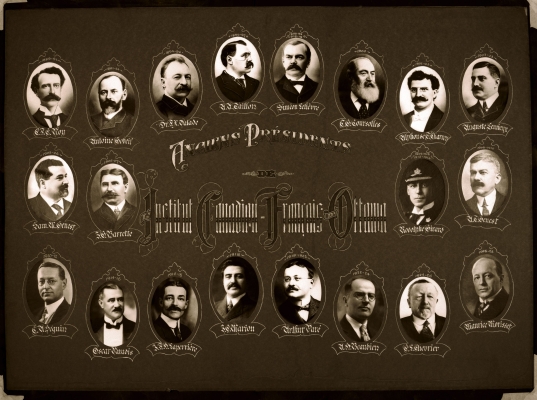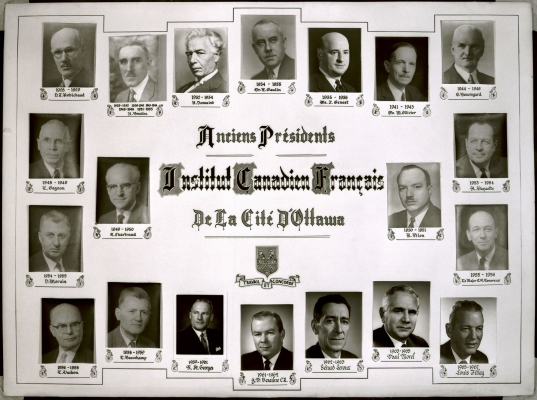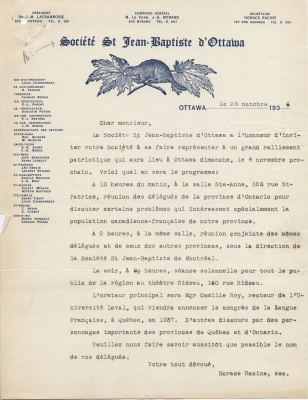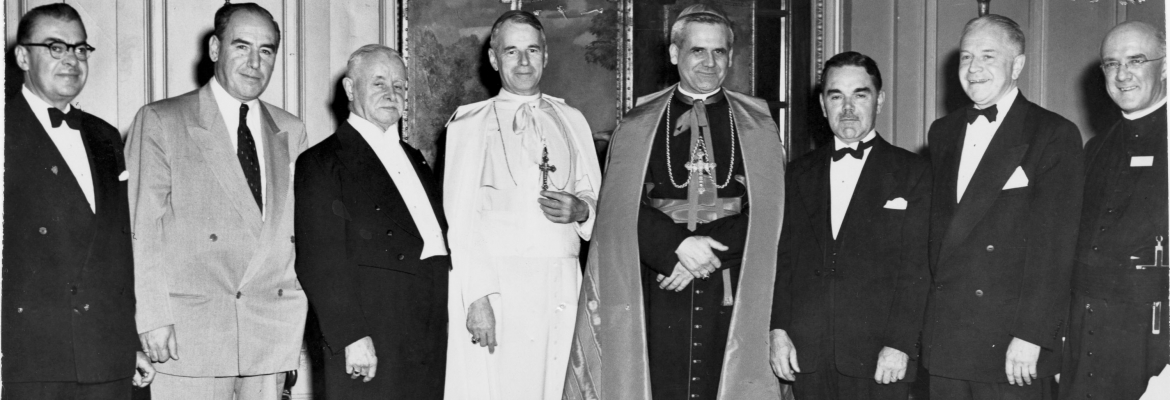Bytown owes its existence primarily to the forest industry. When it emerges at the beginning of the 19th century as a major logging hub, its population comprises mainly forestry workers and small merchants.
The population quickly diversifies following Queen Victoria’s decision to make Ottawa the capital of United Canada in 1857 and the creation of the Dominion of Canada ten years later. Ottawa’s new status attracts politicians, civil servants, translators and journalists to the city, contributing to a profound change in its social composition. A secular elite emerges. Over decades, it plays an essential role in establishing new social and political structures, which enable Ottawa Francophones to occupy public space.
In 1858, Le Progrès is founded in Ottawa, the first French-language newspaper of what will soon become Ontario. Over the next half-century, 29 of the 46 French-language newspapers founded in Ontario are brought into existence in the capital. Most of them have a fleeting existence. Some don’t even last as long as one election term! Whether they are conservative or liberal, satirical or cultural, these newspapers proved to be a very effective social glue.
Starting in the mid-19th century, the foundations of a French-language association network are laid in Ottawa. The first Francophone association is apparently founded in 1847, when the Mechanic’s Institute in Bytown decides to exclude French from its activities. Indignant, Joseph-Balsora Turgeon, the first French-speaking mayor of Bytown (1853-1854), sets up the Institut canadien-français (ICF) five years later. The mission of the ICF is mainly social and literary. It becomes a hot spot of French theatre in the capital.
The organization, exclusively male, is also interested in the major political issues that shake up the country during the early years of the confederal regime: the place of French and Catholicism in Francophone minority schools, Canada’s relations with Great Britain, etc. The ICF is still well established in Ottawa. More of a social club today, it still seeks to “serve the French language and culture.” It will be up to other organizations, such as the Société Saint-Jean-Baptiste, founded the following year, or the Association canadienne-française d’éducation d’Ontario (ACFÉO), created in 1910, to follow a more resolute political path.
Numerous other associations also take shape in Ottawa. They strengthen social cohesion and solidify the place of the federal capital in French Ontario’s political sphere: the Union des cultivateurs franco-ontariens (1929), la Fédération des caisses populaires de l’Ontario (1946), Théâtre-Action (1972), la Table féministe francophone de concertation provinciale de l’Ontario (1992), l’Union provinciale des minorités raciales et ethnoculturelles francophones de l’Ontario (2005), etc. This network of associations represents an exceptional political forum, offering Francophones in the capital a place to consult, deliberate and work together on joint endeavours.
The development of this network bears witness to Ottawa’s ascendance not only in the Franco-Ontarian network of associations, but also in the entire Canadian Francophonie. Many of the capital’s associations have a provincial or pan-Canadian mandate. This is true of the Association canadienne-française d’éducation d’Ontario (1910), the Ordre de Jacques-Cartier (1926), the Fédération de la jeunesse canadienne-française (1974) and the Fédération des communautés francophones et acadienne du Canada (1976), to name just a few. Ottawa remains, still today, French Ontario’s and French Canada’s main metropolis.
Members of Ottawa's Institut canadien-français, card and billiards players, in a room at the Institute, Ottawa, [ca. 1890].
Source: University of Ottawa, CRCCF, Fonds Institut canadien-français d'Ottawa (C36), Ph38-29.
